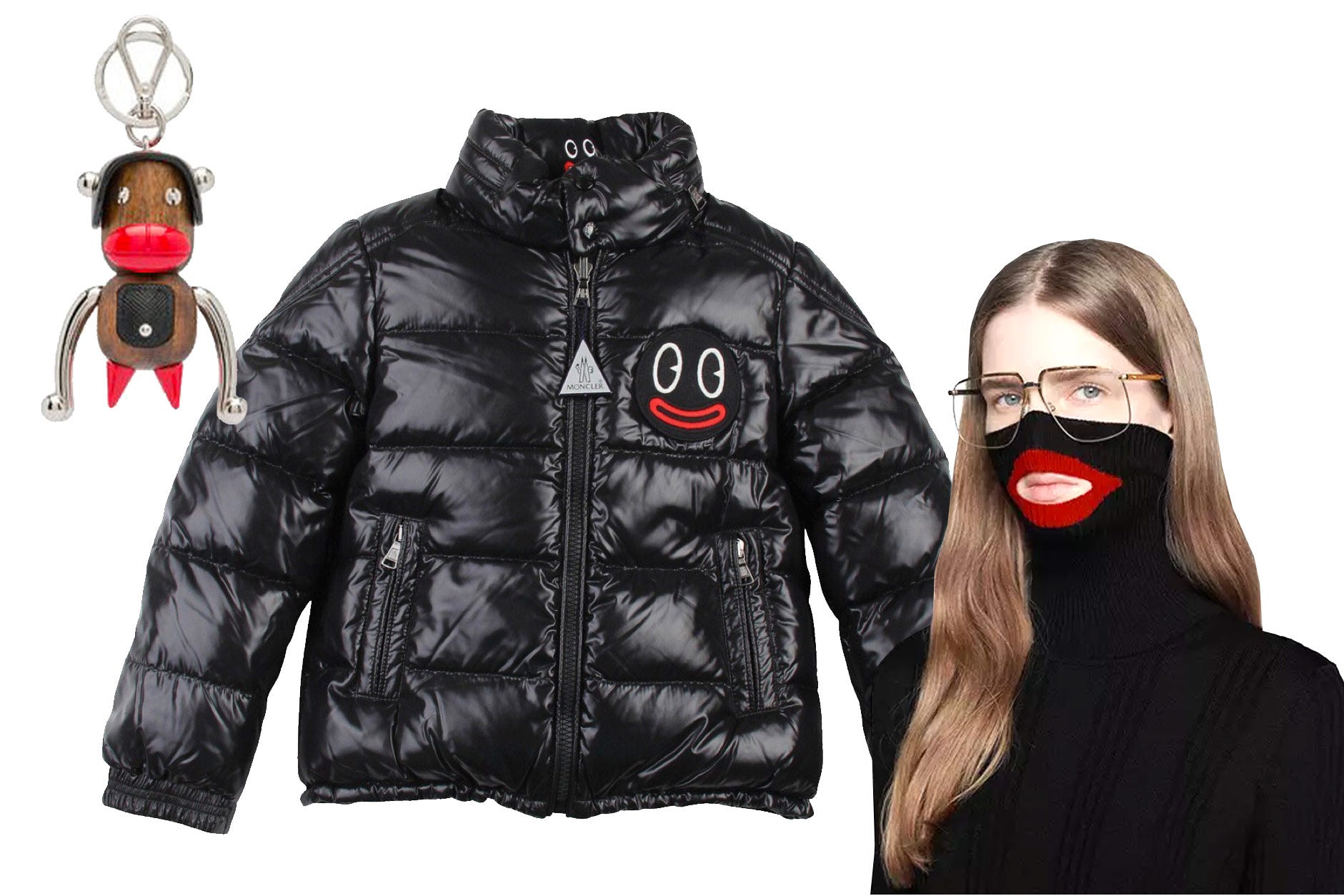“I am a Black man before I am a brand,” Dapper Dan, the beloved designer and tailor, declared on Instagram last week after the revelation of an $890 Gucci knit top that resembled blackface, with a black pull-up neck and grotesque red-lip caricature. “Another fashion house has gotten it outrageously wrong,” he went on. “There is no excuse nor apology that can erase this kind of insult.”
Dapper Dan once famously re–mixed and matched knockoff Gucci prints and materials for members of the black community, many of whom had little or no access to the luxury brand. Just last year, in what was viewed as an effort to atone for failing to acknowledge his influence, Gucci reignited Dan’s designs and embraced him into the corporate fold with the company’s launch of his Harlem-based atelier. Now, a short time later, here we are. On Friday, Gucci CEO Marco Bizzarri high-tailed his way to Harlem to meet with Dan and a group Dan described as “90% people of color” about the blackface controversy. Afterward, Gucci said it would step up diversity in hiring, bring on an executive focused on inclusion in New York, and launch a scholarship program in 10 cities.
Although it’s clear Gucci recognizes the crisis it faces, there’s reason to be skeptical of its overtures. Over the past decade, the brand had grown stale: Vintage bags were selling at incredibly low price points on eBay, and it slowly lost the influence it once had as a luxury leader. In 2015, Gucci appointed Bizzarri as its new CEO, and he soon hired creative director Alessandro Michele, who took a more whimsical and inclusive approach to design. Reconnecting to its historical roots in street culture through figures like Dapper Dan and hip-hop stars, Gucci saw tremendous gains in popularity and profits, in large part thanks to black talent who embraced the brand.
Now, the hip-hop community—some of Gucci’s most dedicated disciples, many of whom have expressed their enthusiasm for the brand in song—are in an uproar. 50 Cent set a Gucci T-shirt aflame. T.I. turned to Instagram to launch a call to boycott the brand. Soulja Boy, who loved the Gucci logo so much he tattooed it on his forehead, has announced that he is having the ink removed. Other consumers took their anger to social media. The Gucci incident occurred shortly after recent claims that Prada used blackface imagery in their new Pradamalia figurines, and as reports of blackface in one of luxury coat brand Moncler’s previous collections also resurfaced. Gucci, it’s clear, is not alone, but it is exceptional in how it reveled in sales from its black fans while still managing to release a sweater featuring one of the oldest racist tropes in America.
All of these brands have claimed that the racism in their designs was unintentional. But as a former fashion executive who worked both in retail buying and in a fashion office, I found this defense a bit peculiar. Designers and retailers alike spend months planning, researching, and studying color, trends, and silhouettes far in advance to both capture the designer’s vision and to ensure a product sells. Each item goes through a series of meetings, run-throughs, and approvals before it comes anywhere near a store shelf. The blackface controversies in fashion are not sporadic anomalies. They are enabled by multiple levels of a fashion industry that’s encouraged consumers to buy in, over and over.
Further, as Elaine Nichols, curator of fashion at the National Museum of African American History and Culture in D.C., explained to me, the fashion industry has long been designed to keep out voices that would prevent failures like this. “Part of the issues that have been raised recently within the fashion industry is a situation of seeing, and not seeing, the past and its connection to the present,” she said. “We keep repeating the same kinds of mistakes. There is also an established process of exclusion, whereby fashion houses include a small, select, and elite group of people to make decisions about historical and cultural ideas.
“In a number of instances designers or the decision-makers who sit in the room to determine what will be released this season are unfamiliar with the history of racism, sexism, religion,” she added. “Ask somebody! There are scholars who study these topics, people who have lived experiences, librarians who research the subject matter and can contribute to their knowledge with valuable background information.”
“Ask somebody” is not fashion’s way, especially if that somebody is not rich, white, or pedigreed. This is why, even with Dapper Dan in the corporate family, Gucci has stumbled so egregiously. Can this change? The brands want us to think so. As New York Fashion Week recently came to a close, many seemed to recognize the crossroads ahead of them. Prada announced the launch of a diversity council in partnership with Ava DuVernay to “elevate voices of color within the company and fashion industry at large.” Meanwhile, Gucci CEO Bizzarri, in an internal letter to employees, wrote, “We made a mistake. A big one. Because of cultural ignorance, but ignorance is not an excuse. And we accept responsibility for this mistake.” Bizzarri still doesn’t seem to recognize that this is far more than a single mistake; it’s the perpetuation of a system that will not end until the brands truly commit to more black and diverse voices not just on runways, but inside fashion houses themselves.
And if they don’t, well, there are a lot more T-shirts to burn. If we’ve learned one thing in this sordid saga, it’s that fashion consumers are already taking back the power from outside of the industry’s gilded walls. They’ll be watching.
